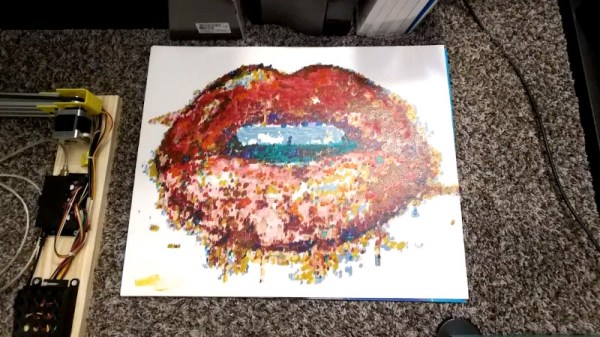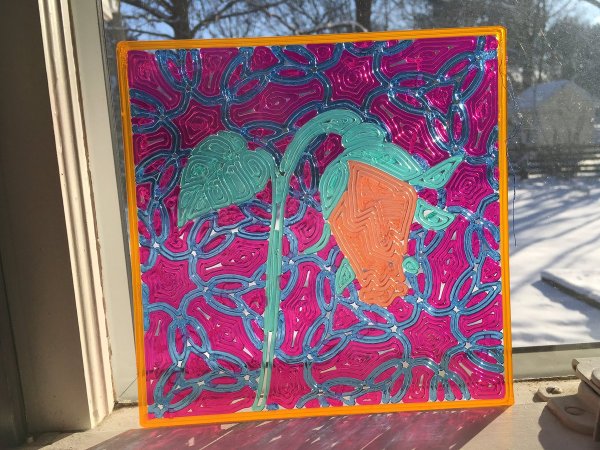Digital imagery is great, but there’s a certain charm to a real, handpainted piece. However, we live in an age of CNC, and the robots are always willing to try something new if they’re properly instructed how to do it. In this vein, [Alexander Leiser] developed PaintBot to paint beautiful pictures for him.
The ‘bot uses aluminium extrusion and stepper motors to move around. A 3D printed bracket was printed to hold a paintbrush so the artbot can do its work. [Alexander] wrote a script in C# to parse images and generate the requisite G-code for the ‘bot. Over time, this expanded into a full application, with a GUI and provision for automatic color changing. There’s plenty of logic required, to cover things like cleaning the brush between colors and composing the image properly. The medium of choice is acrylic on canvas, after early experiments with paper were found to be unsatisfactory.
The output from PaintBot is impressive, with a certain digital quality to the way the individual paint strokes make up the final image. [Alexander] has also wrapped up the software and named it PaintCam. Distributed on Thingiverse, it allows anyone with a 3D printer to use it as a robot painter themselves.
The project shows that it’s possible to create a nice artwork using CNC hardware, and we’d love to see what this could do with a neural network back end doing some artistic interpretation. If you build such a system, be sure to let us know! Video after the break.















